Wild Horse Island State Park
- January 22, 2024
- 0 comment
Wild Horse Island State Park emerges as a captivating destination for those who cherish nature’s unspoiled beauty, located in the majestic Flathead Lake of Montana. This sprawling 2,100-acre park is more than its name implies; it’s a vibrant ecosystem where wild horses roam freely amidst a rich tapestry of wildlife and diverse plant life. The park’s landscape is a picturesque blend of undulating hills, towering ancient Ponderosa pines, and rugged, pristine shorelines.
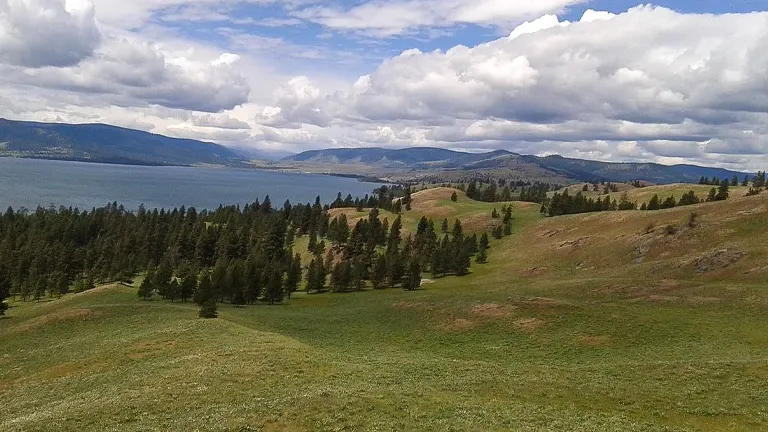
Beyond its visual appeal, the island is steeped in history, once serving as a natural corral for Native American tribes’ horses. It’s an ecological treasure, home to unique flora and fauna, including bighorn sheep and bald eagles, that add to the island’s mystique. Whether you’re an avid hiker, a passionate wildlife photographer, or a seeker of tranquil natural settings, Wild Horse Island State Park offers an immersive experience. Embark on an exploration of this extraordinary island, where each path unveils stunning vistas and every corner whispers tales of the wild.
Characterizing Features of Wild Horse Island State Park
- Largest Island on Flathead Lake: Wild Horse Island is the largest island on Flathead Lake, covering approximately 2,164 acres. This expansive area contributes significantly to the park’s diverse ecosystem and offers a wide range of habitats. The island’s substantial size makes it a prominent feature of Flathead Lake, which is renowned as Montana’s largest freshwater lake.
- Varied Topography and Elevation: The island showcases a varied topography, with its elevation at 2,900 feet above sea level. This variation in landscape includes six distinct summits, open meadows, and southeastern grasslands. The unique topography is a result of glacial activity, shaping the island into an intriguing mix of rugged cliffs and rolling hills.
- Old Growth Ponderosa Pine Forests: The northern side of Wild Horse Island is notable for its old-growth forests, predominantly consisting of Ponderosa pine (Pinus ponderosa) and Douglas fir (Pseudotsuga menziesii). These ancient trees stand as silent witnesses to the island’s long ecological history and are crucial to maintaining its biodiversity.
- Protected Wilderness and Management: Since 1977, the island has been designated as a state park and is managed as a primitive area. This management approach aims to preserve the island’s natural beauty and maintain its status as a wildlife habitat. The park’s status as a protected wilderness area emphasizes the importance of conservation and ecological balance.
- Ecological Significance and Habitat Diversity: The island’s diverse habitats, ranging from its forested areas to open grasslands, play a vital role in supporting a variety of wildlife species. The presence of rare and endangered plant species on its Palouse-like prairie grasslands adds to its ecological significance. This diversity of habitats makes the island a crucial area for conservation efforts and environmental studies.
- Historical and Cultural Importance: Wild Horse Island has a rich historical background, including its use by the Salish-Kootenai tribes to pasture horses. This cultural heritage adds depth to the park’s character and underscores its significance in the region’s history.
Each of these features contributes to the unique character and appeal of Wild Horse Island State Park, making it a fascinating destination for nature enthusiasts, historians, and recreational visitors alike.
History of Wild Horse Island State Park
Wild Horse Island State Park, a jewel nestled in Montana’s Flathead Lake, has a rich tapestry of history that dates back centuries. The Salish-Kootenai tribes were the first known people to recognize the strategic importance of the island, using it as a natural pasture for their horses to protect them from theft by rival tribes. This historical use is integral to the island’s name and legacy. In 1872, the island became part of the Flathead Indian Reservation, a status it maintained until 1904 when it was divided into individual plots. Despite various attempts at agricultural development, none succeeded, leaving the island largely untouched and preserving its natural state. This period of the island’s history reflects a dynamic interaction between human endeavors and the resilience of nature.
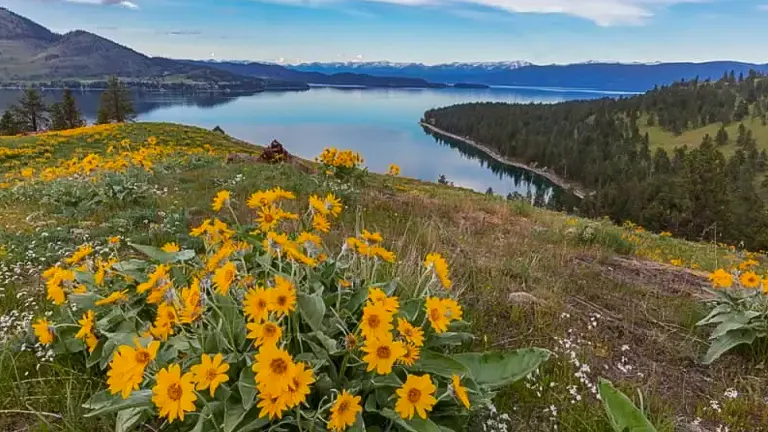
The early 20th century brought significant ecological changes to Wild Horse Island. Between 1910 and 1915, homesteaders cleared many of the island’s old growth trees and introduced non-native grasses and other plant species. These introductions altered the island’s ecosystem, impacting the native short-grass prairie and the wildlife dependent on it. However, conservation efforts have since been implemented to preserve the remaining natural landscape. In 1977, the island was protected as a state park, managed by Montana Fish, Wildlife & Parks. This marked a turning point in the island’s history, shifting the focus towards conservation and ecological balance, ensuring that its natural beauty and historical significance would be preserved for future generations to appreciate and learn from.
Importance in Conservation and Recreation in Wild Horse Island State Park
Wild Horse Island State Park stands as a significant beacon of conservation and recreation, blending the preservation of a unique ecosystem with opportunities for public enjoyment and education. As a protected area within Flathead Lake, the park plays a pivotal role in conserving diverse habitats and species. Notably, it serves as a haven for bighorn sheep, which have been successfully managed and monitored to ensure a thriving population. The presence of these sheep, along with the island’s namesake wild horses, bald eagles, and other wildlife, underscores its ecological importance. Conservation efforts extend to the protection of rare and endangered plant species found in its unique Palouse-like prairie grasslands, further highlighting the park’s role in maintaining biodiversity.
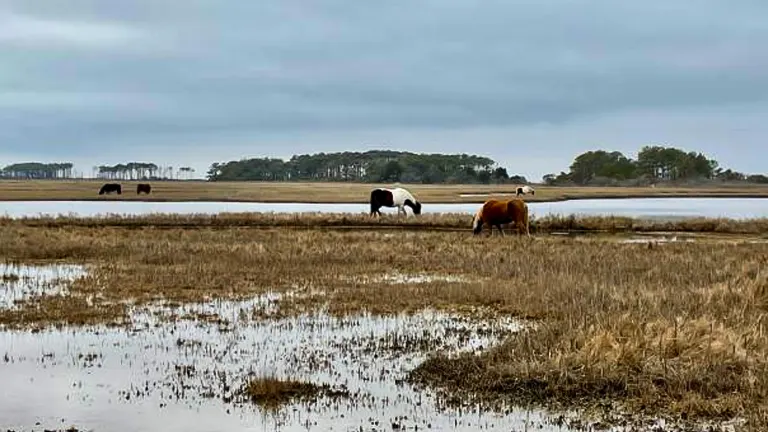
In addition to its conservation efforts, Wild Horse Island is a cherished recreational destination. With its rich wildlife, scenic trails, and tranquil natural settings, the park offers an immersive experience for hikers, wildlife enthusiasts, and photographers. Its status as a day-use only area, accessible solely by boat, enhances its appeal as an unspoiled retreat. The park’s management emphasizes a balance between human recreation and the preservation of natural habitats, ensuring that visitors can enjoy the splendor of the island while contributing to its conservation. This delicate balance makes Wild Horse Island State Park not just a natural sanctuary, but also a model for sustainable recreation in a protected area.
Unique Location of Wild Horse Island State Park
Wild Horse Island State Park boasts a unique location that sets it apart as a natural treasure within Montana’s stunning landscape. Situated in the expansive Flathead Lake, the largest freshwater lake in Montana, the island is an ecological and geographical wonder. This impressive positioning makes the island a distinct feature in the region, offering panoramic views of the surrounding mountainous terrain and crystal-clear waters. The island’s geographical formation is a result of ancient glacial activity, which has sculpted its varied landscape, ranging from rugged cliffs to gentle meadows.

Its location within the Flathead Indian Reservation adds a layer of cultural and historical significance, intertwining the natural beauty with the rich heritage of the Native American tribes, particularly the Salish-Kootenai. The combination of its striking natural beauty, significant elevation changes, and its cultural backdrop makes Wild Horse Island a unique destination, attracting visitors who seek a blend of scenic splendor, wildlife observation, and a glimpse into the area’s rich historical tapestry.
Diverse Vegetation and Plant Species in Wild Horse Island State Park
- Ponderosa Pine (Pinus ponderosa): These towering, majestic trees dominate the northern forests of the island. Ponderosa Pines are not only a symbol of the park’s old-growth forest but also play a crucial role in the local ecosystem, providing habitat and food sources for various wildlife.
- Douglas Fir (Pseudotsuga menziesii): Co-existing with Ponderosa Pines, Douglas Fir trees add to the island’s dense forested regions. These evergreens are known for their towering heights and are a significant part of the island’s forest ecosystem.
- Palouse Prairie Grasslands: This unique grassland ecosystem is reminiscent of the native prairies that once covered much of Montana. The Palouse Prairie on Wild Horse Island is home to a variety of native grass species, which provide a crucial habitat for many of the island’s herbivorous wildlife.
- Bunchgrass: Found within the prairie grasslands, bunchgrasses are a vital component of the island’s ecosystem. They contribute to the preservation of the prairie landscape and support various wildlife species.
- Camas (Camassia quamash): These flowering plants, significant both ecologically and culturally, are found in the moist meadows of the island. Historically, camas bulbs were an important food source for Native Americans.
- Sagebrush (Artemisia spp.): Common in the drier areas of the island, sagebrush is an essential part of the shrub-steppe ecosystem. It provides food and shelter for various animal species and adds to the island’s biodiversity.
- Wildflowers: A variety of wildflowers bloom across the island, particularly in spring and early summer. These include species like Indian Paintbrush (Castilleja spp.) and Lupine (Lupinus spp.), adding vibrant colors to the landscape and attracting pollinators.
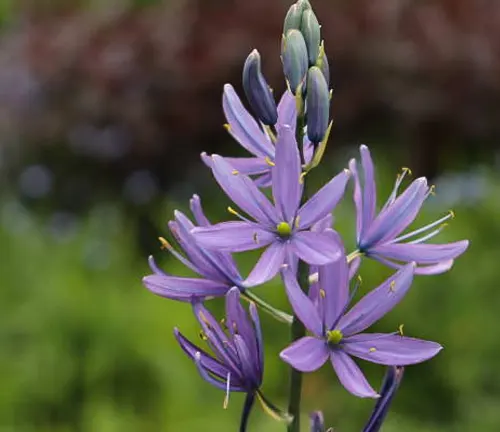
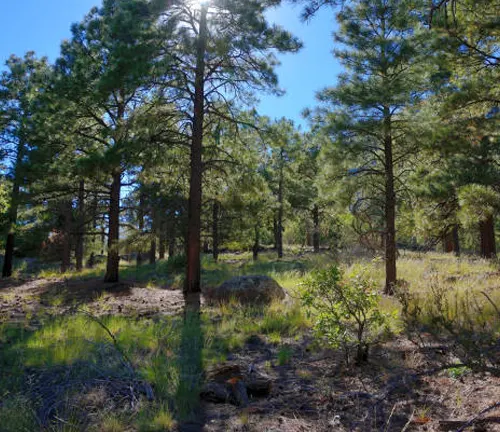
Fauna in Wild Horse Island State Park
- Bighorn Sheep (Ovis canadensis): The park is a haven for these majestic creatures, which were reintroduced to maintain the species’ population. The thriving bighorn sheep on Wild Horse Island are a testament to successful wildlife management efforts, with their numbers being carefully monitored to ensure a healthy ecosystem.
- Wild Horses: The namesake of the island, the presence of wild horses adds a sense of mystique and beauty to the park. Though their numbers are limited, the sight of these free-roaming horses is a captivating experience for visitors.
- Bald Eagles (Haliaeetus leucocephalus): These iconic birds of prey are a spectacular sight and are often seen soaring over the island or perched in tall trees. They play a crucial role in the island’s ecosystem as top predators.
- Mule Deer (Odocoileus hemionus): Commonly spotted across the island, mule deer are an integral part of the park’s wildlife. They adapt well to the varied terrain of the island, from forested areas to open grasslands.
- Songbirds and Waterfowl: The island is a haven for various species of songbirds and waterfowl, making it a popular spot for birdwatchers. The diversity of birds is attributed to the island’s range of habitats, from dense forests to open waters.
- Falcons: These swift birds of prey add to the island’s avian diversity. Their presence indicates a healthy, balanced ecosystem, as they are key players in maintaining the population of smaller birds and rodents.
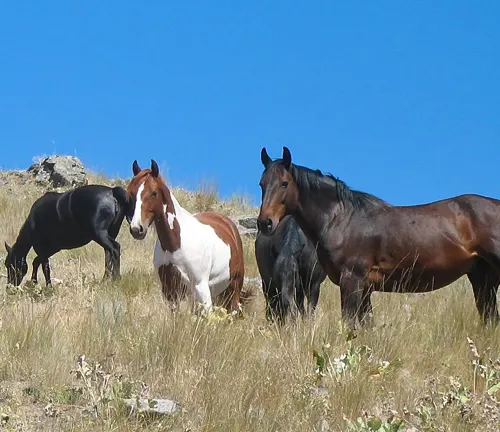
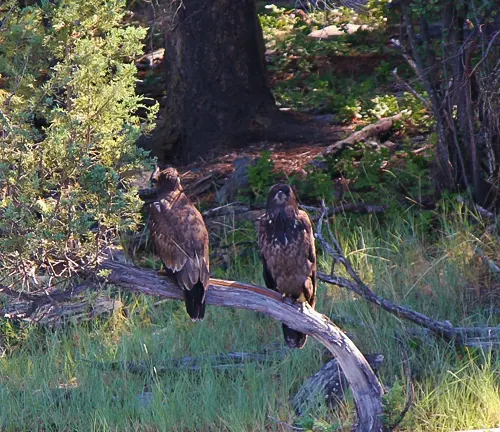
Each of these species plays a vital role in the ecological balance of Wild Horse Island State Park. Their presence and health are indicators of the success of the park’s conservation efforts, ensuring that the island remains a biodiverse and ecologically rich habitat.
Attractions in Wild Horse Island State Park
Wildlife Viewing: One of the park’s most celebrated attractions is its rich wildlife viewing opportunities. Visitors have the chance to observe the bighorn sheep, a conservation success story, and the elusive wild horses that give the island its name. The presence of bald eagles, mule deer, and various bird species also makes the park a wildlife enthusiast’s paradise.
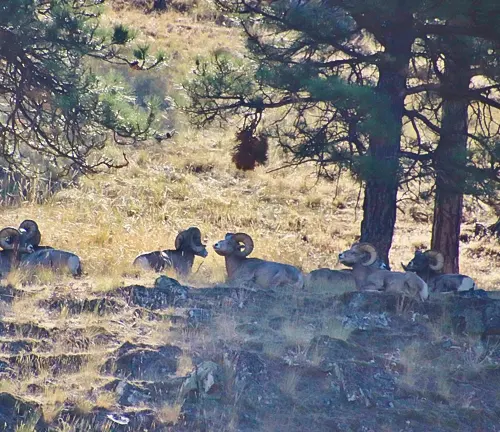
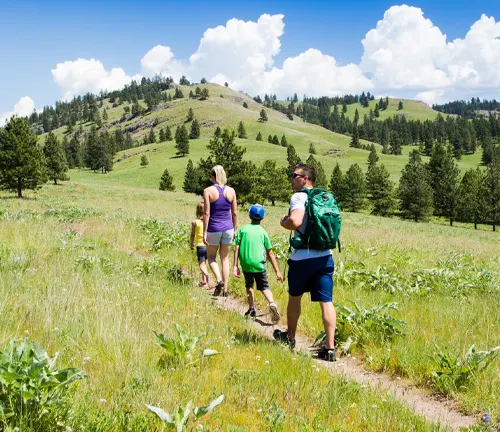
Hiking Trails: The park offers a network of trails that allow visitors to explore its diverse landscapes. These trails range from easy walks to more challenging hikes, leading through old growth forests, open grasslands, and offering breathtaking views of Flathead Lake. Hiking in the park is not only a way to experience its natural beauty but also to observe its wildlife and plant life up close.
Photography Opportunities: With its stunning landscapes and abundant wildlife, Wild Horse Island is a photographer’s dream. Whether it’s capturing the majestic bighorn sheep, the serene landscapes, or the dramatic skies over Flathead Lake, the park offers endless opportunities for both amateur and professional photographers.
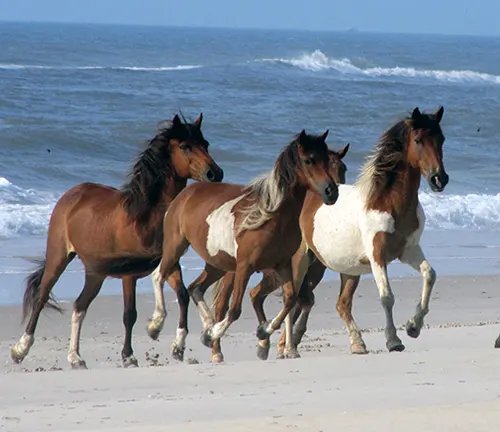
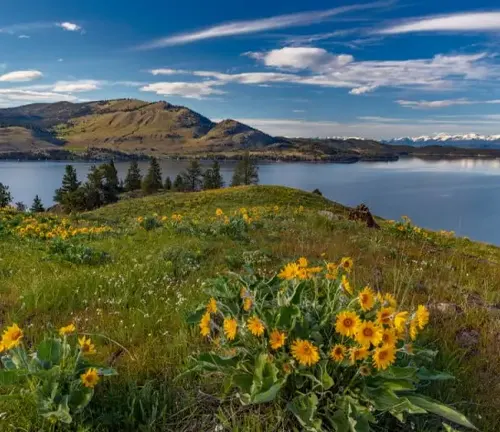
Flora Exploration: Apart from its wildlife, Wild Horse Island is also known for its diverse plant life, including rare and endangered species. Botany enthusiasts and nature lovers can explore the island’s different ecosystems, ranging from prairie grasslands to old-growth forests, discovering various plant species, including the native Ponderosa Pine and Douglas Fir.
Recreational Activities in Wild Horse Island State Park
- Hiking: Hiking is one of the most popular activities in Wild Horse Island State Park. The park offers a variety of trails that cater to all levels of hikers, from easy, family-friendly walks to more challenging hikes for the experienced adventurer. These trails not only provide a great way to explore the island’s diverse landscapes, including its stunning meadows, old-growth forests, and rugged shorelines, but also offer opportunities to encounter the island’s wildlife and enjoy panoramic views of Flathead Lake.
- Boating: Given the island’s location in the middle of Flathead Lake, boating is a favorite activity for visitors. Accessible only by water, the journey to the island itself is an adventure. Boaters can enjoy the crystal-clear waters of the lake, explore the island’s picturesque shoreline, and find secluded coves for a peaceful retreat. It’s a perfect activity for those seeking both relaxation and the thrill of exploring by water.
- Kayaking and Canoeing: Kayaking and canoeing provide a more intimate way to experience the waters of Flathead Lake and the shores of Wild Horse Island. Paddlers can glide along the calm waters, enjoying the serene environment and the scenic beauty of the island from a unique vantage point. This activity is ideal for visitors looking for a tranquil experience and the chance to connect with nature.
- Photography: With its rich natural landscapes and abundant wildlife, Wild Horse Island State Park is a haven for photographers. Whether capturing the rugged beauty of the landscape, the diverse wildlife, or the stunning vistas of Flathead Lake, the park offers endless opportunities for both amateur and professional photographers to capture stunning images.
- Bird Watching: Bird watching is another engaging activity in the park. The diverse habitats on the island attract a variety of bird species, making it a prime spot for bird enthusiasts. Visitors can observe songbirds, waterfowl, and impressive raptors, including bald eagles, in their natural habitat, offering a peaceful and rewarding experience.
- Picnicking: Picnicking is a relaxing way to enjoy the park’s natural beauty. Visitors can bring a picnic to enjoy in one of the many scenic spots across the island. It’s a perfect way to unwind and soak in the serene atmosphere of the park, making it ideal for families, couples, or anyone looking to enjoy a meal in a picturesque setting.
- Nature Exploration: For those interested in the natural environment, Wild Horse Island offers ample opportunities for nature exploration. Visitors can immerse themselves in the island’s diverse ecosystems, discovering its flora and fauna, and learning about the ecological significance of this unique area.
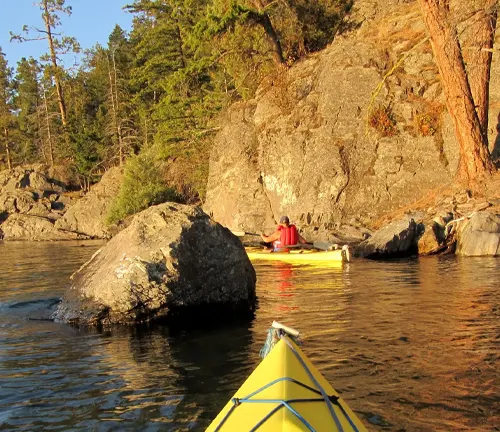
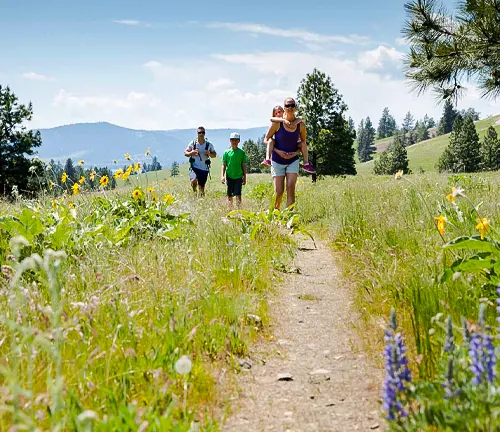
Each of these activities offers a unique way to experience the beauty and tranquility of Wild Horse Island State Park, making it a versatile destination for all types of outdoor enthusiasts.
Different Facilities and Amenities in Wild Horse Island State Park
- Designated Landing Sites: Wild Horse Island State Park offers six designated landing sites for boats. These sites are carefully chosen to provide access to the island while protecting its shoreline and natural habitats. They are crucial for visitors arriving by boat, kayak, or canoe, ensuring a minimal environmental footprint.
- Informational Kiosks: At key points around the park, informational kiosks provide valuable insights into the island’s history, ecology, and wildlife. These kiosks are a great resource for visitors to learn more about the park and its significance, enhancing the overall visitor experience.
- Day-Use Areas: The park is equipped with specific areas designated for day-use activities. These areas allow visitors to rest, picnic, and gather without impacting the surrounding natural environment. They are strategically located to offer convenience while preserving the park’s pristine condition.
- No Public Docks or Facilities for Overnight Stay: In line with its conservation ethos, the park does not have public docks or facilities for overnight stays. This policy helps to maintain the island’s natural state and limits human impact, ensuring that the park’s ecosystems remain undisturbed.
- Wildlife Observation Points: Specific spots on the island are established for wildlife observation, allowing visitors to safely watch the island’s fauna, such as bighorn sheep and wild horses, in their natural habitat. These points are designed to offer good viewing opportunities while minimizing disturbance to the wildlife.
- Trash Disposal Stations: To uphold the park’s commitment to cleanliness and environmental protection, trash disposal stations are placed at key locations. Visitors are encouraged to use these facilities to keep the park clean and maintain its natural beauty.
- No Food Storage Lockers: Visitors should note that there are no food storage lockers available on the island. This requires visitors to plan accordingly, especially since the island is frequented by bears and other wildlife.
By focusing on these specific facilities and amenities, the list provides a clearer picture of the unique infrastructure and services available at Wild Horse Island State Park, enhancing visitor convenience while prioritizing ecological preservation.
Tips and Advice for Visiting Wild Horse Island State Park
- Plan for Boat Transportation: Since Wild Horse Island is only accessible by boat, it’s crucial to plan your water transportation in advance. Whether you’re renting a boat, kayaking, or canoeing, ensure you’re aware of the safety guidelines and have all the necessary equipment. It’s also important to use the designated landing sites for docking to protect the shoreline and natural habitats.
- Respect Wildlife: The island is home to a variety of wildlife, including bighorn sheep, wild horses, and numerous bird species. While observing these animals, maintain a safe distance, do not feed them, and avoid disturbing their natural behaviors. This respect for wildlife ensures a safe experience for both visitors and the animals.
- Leave No Trace: Adhering to Leave No Trace principles is critical in preserving the natural beauty of Wild Horse Island. Pack out everything you bring in, including all trash and leftovers. Staying on designated trails and picnic areas also helps in minimizing the human impact on the island’s ecosystems.
- Be Prepared for Changing Weather: The weather on the island can be unpredictable, so it’s advisable to come prepared with appropriate clothing. Layering is key, and bringing rain gear, even on sunny days, is a good precaution. Also, don’t forget sunscreen and hats for protection against the sun.
- No Overnight Stays: Remember that Wild Horse Island is a day-use only park. Overnight camping or stays are not permitted, so plan your visit accordingly to ensure you leave the island before nightfall.
- Carry Sufficient Water and Food: There are no food or water facilities available on the island, so bring enough water and food for your entire visit. However, be mindful of storing food properly, especially since the island is bear country.
- Stay Informed About Park Rules: Familiarize yourself with the park’s specific rules and regulations. This includes guidelines on where to land boats, areas designated for specific activities, and any seasonal restrictions that might be in place.
- Check for Permits: If you’re planning a visit with a large group or for specific activities, check if you need a permit. This is particularly important for educational, interpretive, or administrative activities involving larger groups.
- Be Bear Aware: Since bears are known to frequent the island, educate yourself on bear safety. Store your food appropriately while on your boat, and be vigilant about your surroundings, especially when hiking or picnicking.
By following these tips and advice, visitors can ensure a safe, enjoyable, and environmentally responsible experience at Wild Horse Island State Park.
Recommendation
Discover the enchanting beauty of Wild Horse Island State Park, a true natural gem in Montana’s Flathead Lake. Whether you’re hiking through lush trails, spotting wild horses and majestic bighorn sheep, or simply soaking in the tranquil surroundings, this island offers a perfect escape into nature. Its unique wildlife and stunning landscapes make every visit a memorable adventure. Don’t miss the chance to explore this serene and picturesque destination – it’s an experience that will leave you awe-inspired and longing to return.
Conclusion
In summary, Wild Horse Island State Park is a natural jewel in Montana’s Flathead Lake, offering a unique blend of serenity and wilderness adventure. With its rich wildlife, scenic hiking trails, and historical significance, the park provides an unforgettable experience for nature lovers and outdoor enthusiasts alike. It’s a tranquil escape that captivates the heart and soul, making every visit a cherished memory.
FAQs
- What wildlife can I expect to see at Wild Horse Island State Park?
You can see bighorn sheep, the park’s namesake wild horses, bald eagles, mule deer, and various species of birds. Sightings of wildlife, especially the wild horses, can be a remarkable but unpredictable experience. - Are there guided tours available on the island?
Wild Horse Island State Park does not typically offer guided tours, as it is managed as a primitive area. Visitors are encouraged to explore the park independently while respecting its natural and historical significance. - Can I camp overnight at Wild Horse Island State Park?
No, overnight camping is not allowed. The park is a day-use only area, so you’ll need to plan your visit accordingly. - Is fishing allowed in the park?
Yes, fishing is allowed and can be a rewarding activity. However, if you’re fishing from the shore of Wild Horse Island, you’ll need a tribal fishing license due to its location within the Flathead Indian Reservation. - How do I get to Wild Horse Island State Park?
The park is accessible only by boat. Visitors can use personal boats or rent boats from nearby services. Remember to use the designated landing sites for docking. - Are pets allowed on the island?
Pets are not permitted in the park. This rule helps protect the native wildlife and ensures a safe environment for all visitors. - What are the best times of year to visit the park?
Wild Horse Island State Park can be visited year-round, but the best times are from late spring to early fall when the weather is more conducive for hiking and wildlife viewing. - Is there a fee to enter Wild Horse Island State Park?
There is no entrance fee specifically for Wild Horse Island State Park, but remember that all watercraft require a valid Aquatic Invasive Species Prevention Pass, which can be obtained through Montana Fish, Wildlife & Parks.
Discover the enchanting wilderness of Wild Horse Island State Park, where nature’s beauty and history come alive. Whether it’s a quest for adventure or a peaceful retreat, the island awaits to offer unforgettable experiences.


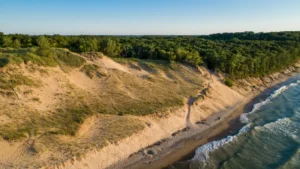

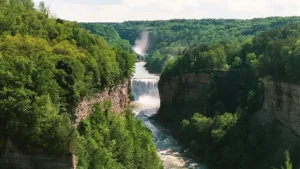
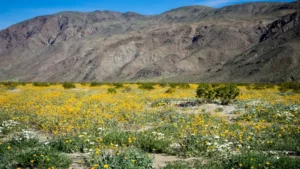
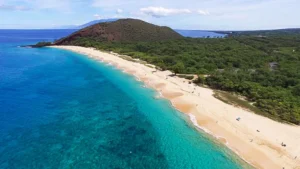
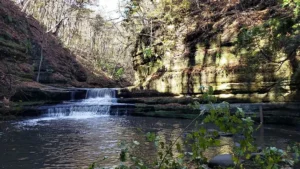
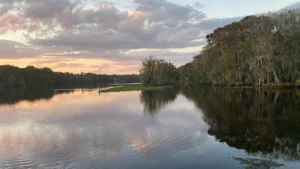
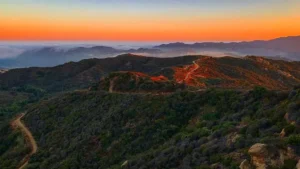
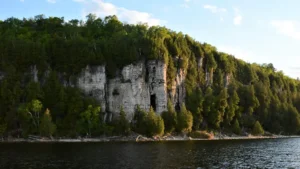
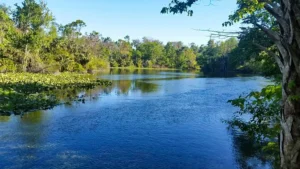
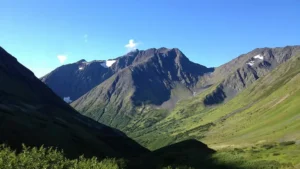
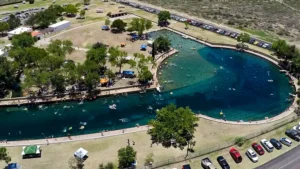
Leave your comment